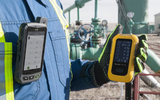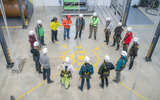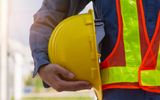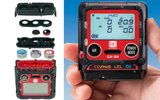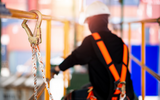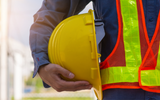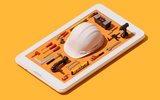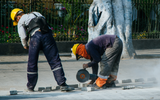Blog
Utilizing PID Gas Monitors to Detect Diesel Vapor
Facility and site managers may be well versed in monitoring their workplace for "known" hazardous gasses such as combustibles, O2, CO, and H2S, but detecting a wide array of VOCS can be difficult.That’s where photoionization detector (PID) gas monitors come in. They can be used to detect low concentrations of volatile organic compounds (VOCs) in the air. These compounds are considered extremely dangerous to workers. They tend to be found in and around facilities that handle hazardous materials,
…
Jun 6th 2022
June 2022: National Safety Month
In 1996, the National Safety Council (NSC) established June as National Safety Month to increase awareness of health and safety risks to decrease injuries and deaths among workers in the United States. Worksite safety risks can be exceptionally high in the summer months, given that problems from excessive heat, sun exposure, and dehydration can be more prevalent. So, while various safety issues are covered, summer safety tips can be a particular focus in some industries.
NSC provides free r
…
Jun 2nd 2022
Types & Classes of Helmets & Hard Hats
OSHA requires every worker to wear head protection if at least one of the following conditions are met at a worksite:
Objects could fall from above to strike employees on the head;Employees could bump their heads against fixed objects;Someone’s head could come into contact with an electrical hazard.Head protection varies for different jobs. Some are more specialized and rated better for particular jobs than others. ANSI rates helmets and hard hats by protection level and features. Types and cla
…
May 18th 2022
Transitioning from RKI’s GX-2009 to the GX-3R 4-Gas Confined Space Monitor
For over a decade,
RKI’s GX-2009 has been one of the most popular 4-gas monitors on the market (and one of our best sellers). However, our industry is all about improvements and innovations in the name of safety, so good things can only get better. RKI is discontinuing the production of critical components for the GX-2009 and estimates having enough for two years of production and inventory, which takes us through 2023. While replacement parts for the GX-2009 will be available for yea
…
May 16th 2022
Considering Cost-of-Ownership Before Buying a Gas Monitor
You should consider more than just the price tag when buying a gas monitor, because a lower upfront cost doesn’t mean it offers the best value. Monitoring your workplace for hazardous gases can take time, but safety should never be compromised.
That’s why it’s important to calculate the total cost of ownership when using a gas monitor. Certain devices come with features that can help you save money over time, even though they come with a higher price tag. Keep the following considerations i
…
May 16th 2022
Safety Stand-Down & Construction Safety Week 2022
When entering a construction site, a top goal should be returning home safely. Construction Safety Week, from May 2-6, 2022, is focused on ways to do so for those in the construction industry. In addition to making sure workers are properly trained and equipped with the right construction safety PPE and workwear, like hard hats and eye protection, Construction Safety Week prioritizes safety by connecting and supporting workers through resources including videos
…
Apr 27th 2022
How To Stay OSHA PPE Compliant and Avoid Citation Fines
The Occupational Safety and Health Administration (OSHA) requires employers to provide and maintain a safe work environment. This includes providing appropriate
personal protective equipment (PPE) for their employees when they are working in hazardous environments. PPE can include special workwear, eye protection, gloves, face shields, masks, and ventilation systems that prevent injury and illness on the job. This equipment should be cleaned and regularly inspected for damage. Organizatio
…
Apr 26th 2022
What Should Your Gas Detection Program Include?
Your gas detection program should do everything possible to ensure your workers remain protected from the dangers of hazardous gases. Protecting workers requires more than just making sure they have a gas detector, and sending them on their way—to ensure safety, there’s a lot to do behind the scenes before anyone sets foot on the worksite. The following four key factors should be considered when setting up or re-examining your gas detection program.The Right EquipmentYour gas detection equipment
…
Apr 26th 2022
Safety Apps and How They’re Reporting and Recording Safety Accidents
Mobile technology is all around us and has become an increasingly large part of our workplaces. It’s hard to find a worksite that doesn’t have a number of smartphones in worker pockets or tablets in hands. The technology can be used for more than streaming videos and checking emails, though: many mobile apps can help you improve your workplace safety. As part of a larger safety management program, mobile apps can add a lot of value to your workplace. Not only can smart devices contact workers
…
Mar 30th 2022
Silica Dust Rules and Regulations
Working in manufacturing or construction industries means being exposed to a number of respiratory hazards, including silica dust. Respirable crystalline silica is commonly found in these job sites as a natural consequence of the activities that are usually done there: cutting, grinding, drilling, brushing stone, concrete, brick, mortar, drywall, and other construction materials can all create silica dust.
Silica dust is a direct and serious threat to the respiratory health and safety o
…
Mar 22nd 2022


